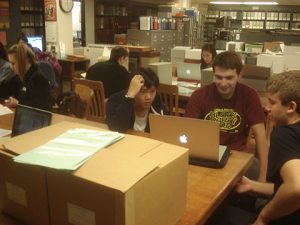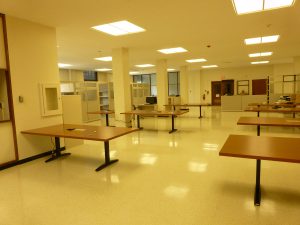
Q&A With Linda Stepp, Archives Program Officer
How did you end up in the Archives, and did you think you’d be an archivist?
While in library school (GSLIS /the i-school) I thought I wanted to be a children’s librarian, but then in a practicum I discovered that I did not like working with kids who misbehaved without parents present. At the same time I had a Graduate Assistantship with the Student Life and Culture Archives and liked processing but also enjoyed doing research for reference questions. Ironically, I believe I was hired for the GA position because I had been in a sorority, which turned out to be my least favorite part of being an undergraduate at Elmhurst College.
What are your responsibilities? How has your work changed over the past almost 20 years?
I have much more responsibility than I’ve ever had. In the 20 years I’ve been here, the Archives has expanded exponentially in the amount of records and staff at our locations. More materials and staff means more work in all aspects of Archives. I lead the reference and administrative operations for the Main Library Archives location within the University Archives. We help visiting and remote researchers from all over the world every day. Topics I’ve personally helped with include historical enrollment statistics, identifying an Arabic manuscript, Illinois farming lesson tours across the country by train, and the experiences of Japanese American students during and after WWII. The Japanese American experience resulted in an exhibit currently running at the Spurlock Museum on campus.
What has been your funniest/strangest/most memorable or satisfying experience at the Archives?
Finding a jar of soil, with the former University Archivist, in an Archives box related to Agriculture records.
What would you like people to know about the Archives (or University history) that may surprise them?
I suspect many believe all we have is University history and they would be right, but we have so much more! We have records that involve groundbreaking research and new inventions. We are rich in records from science, engineering, and agriculture. With the Sousa Archives and Center for American Music, we also have an abundance of University Band and music materials from around the world. I would love for us to acquire more records from the College of Fine and Applied Arts involving material art, drama, theater, and architecture.



